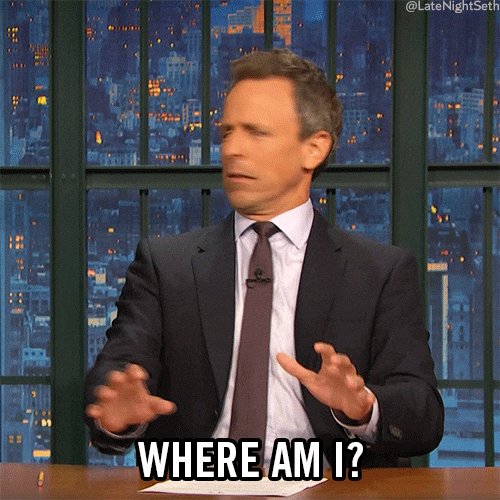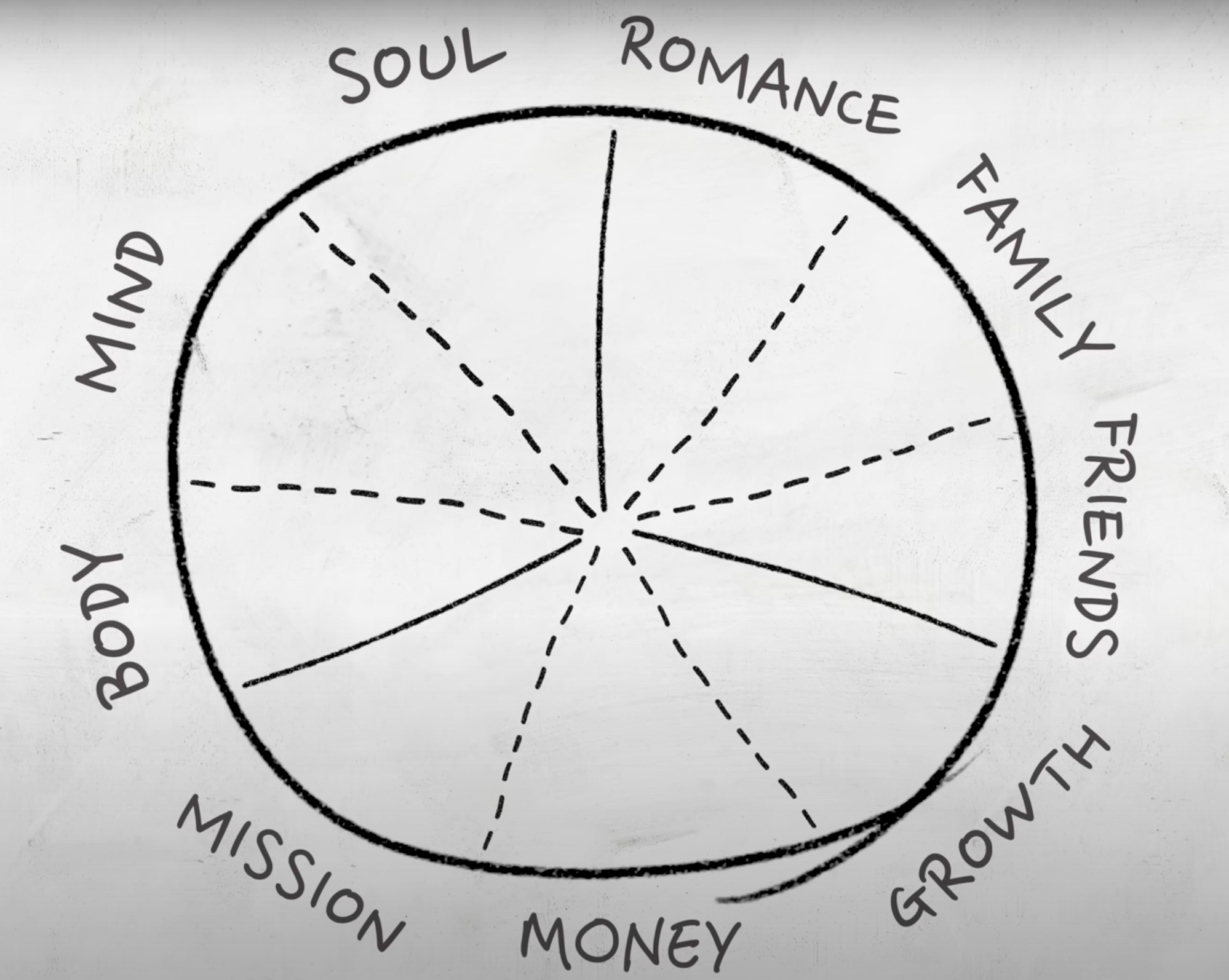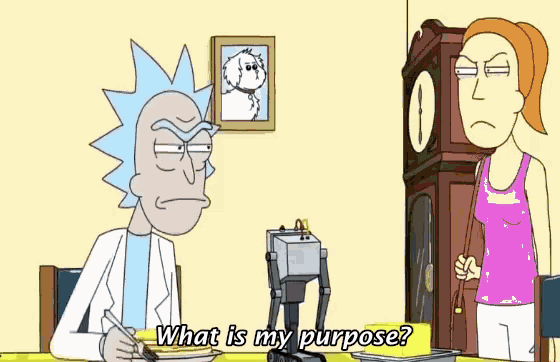The Wheel of Life: A Simple Exercise to Find Balance and Purpose
It's hard to know what to work on if you don't have a good idea of where you are. The Wheel of Life is a fairly simple yet powerful tool that helps you step back, see the bigger picture, and figure out where to focus your energy next.

I strive to live an intentional life.
Productivity has always interested me because I see it as one way to maximize what I’m doing to reach someplace I want to go.
There are definitely drawbacks to thinking like this. After all, life isn’t all about maximization. There must be some enjoyment along the way (“journey before destination”).
I acknowledge this and try to give myself grace when needed.
That being said, I don’t want to do something I know doesn’t work. It’s like the quote often misattributed to Einstein goes, “the definition of insanity is doing the same thing over and over again and expecting different results.”
There must be some sort of balance to strike.
One thing I struggle with on my own journey of self-discovery is trying to evaluate where I am currently. How can I find balance without first taking inventory?

It can be incredibly easy to wish I was farther along or I was maximizing all areas of my life. Wishing alone, though, isn’t going to get me anywhere.
Where should I focus my efforts then? That’s a question I ask myself commonly.
While this question feels like a hydra with constantly sprouting heads, I have found a tool that helps me better locate myself.
That tool is the Wheel of Life.
Some Historical Background
In doing some research for this blog post, I learned that the Wheel of Life actually has a basis in Buddhist teachings. The “bhavacakra” is the Buddhist version of the Wheel of Life.
It’s not exactly the same thing as what I’m talking about, but the core is similar. The bhavachakra was designed to teach practitioners the core beliefs of Buddhism.
The Wheel of Life, on the other hand, is designed to help you look at the core areas of your life to take inventory.
The Layout of the Wheel
I was first exposed to this idea in Ali Abdaal’s video, How to Make Next Year The Best Year of Your Life.
The idea of the Wheel is that it’s…well, a wheel. Or rather a circle which is divided up into three areas: work, health, and relationships.
Those three sections are further divided up into subsections.
The work section consists of…
- Mission
- Money
- Growth
The health section includes…
- Mind
- Body
- Soul
And finally, the relationships section is made up of…
- Family
- Friends
- Romantic
The full Wheel looks something like this:

While likely not fully representative of your entire life, the Wheel is supposed to represent the major areas.
Filling in the Wheel
Once you have your Wheel, it’s time to start filling it in.
The goal is to identify a number on a scale from 1 to 10 on how aligned you feel in each of these areas. To define alignment, Ali uses the following statement: “my actions in the here and now are consistent with where I want to be.”
That phrase can be a bit tricky. It’s not necessarily how successful you are in any particular area but rather how effectively you’re taking the steps to get where you want to go.
The money section is an easy one to look at as an example.

Say it’s your goal to be a multi-millionaire, but you’re currently not one. That doesn’t mean you automatically score a 1 in this sector. If you’re taking the steps to save money and invest that sets you on the right path, your score could be much higher and closer to 10.
If you’re spending your entire paycheck each month, but you want to be a millionaire, then you’d probably be closer to the low end of the range.
It’s about what you’re doing in the present to get to where you want to go in the future.
A Different Kind of Scale
Admittedly, I don’t love the 1-10 scale. I think it’s a bit too broad.
There are some quizzes online that help you establish where you are on the spectrum (like this one).
Alternatively, I like to think of it a different way. I prefer a 7-point scale as follows.
- Going in the wrong direction of your goals quickly
- Going in the wrong direction of your goals moderately
- Going in the wrong direction of your goals slowly
- Not moving toward nor away from your goals
- Going in the right direction slowly
- Going in the right direction moderately
- Going in the right direction quickly
This scale helps me orient myself a bit more. I can better imagine my velocity this way.
Here’s how I’d apply this scale to an area of my life.
I’ve been trying to get in better shape and drop some weight. I’ve been making progress over the year despite not being at my goal weight yet. I’d rate myself at about a 5 out of 7 in the Health/Body category because I’m making slow progress toward my goal.
Determining How to Act
Once you’ve taken inventory, you can determine which areas you want to act on. You likely can’t act on every area at once, so the scoring helps you pick where to start.
First you have to determine if you’re satisfied with a score in a certain area.
Take my Health/Body score for example. I rated myself at a 5, making slow progress. I could be progressing faster, but this isn’t a number one priority for me right now. Moving forward slowly is good enough. I don’t have to make many adjustments in this area currently.
Mission is different. Mission, or purpose, is an area I’m struggling with. In the past, I would’ve rated myself at a 3 to 4. I wasn’t necessarily doing anything to ruin that area of my life, but it was far from where I wanted it.

One solution I’ve had to increase this area of my life was starting this blog.
This blog has pushed me more towards 5, but I wish it were higher. Feeling this way is a gauge to myself that this might be a good area to focus on. I’m not entirely content with that number just sitting at 5.
Figuring Out What Matters to You
It's hard to know what to work on if you don’t have a good idea of where you are. If a basketball player doesn’t ever evaluate his overall game, he doesn’t know if he should work on three-point shooting or defense.
The Wheel of Life helps to give a mostly comprehensive view of your life. It also can be a surprising exercise.
Going into it, I didn’t expect to be so content with the Health/Body score, but after evaluating myself, it’s easier to consider that things take time and that I’m on the right path.
There might be areas where you score higher than you think. Other areas might be lower. Once you have this overarching view, though, you can better decide how to proceed.
You might not care about one section of the chart where you rate yourself lowly, but in another, you might want to move from a 6 to a 7. Just being good in an area might not be enough. It’s entirely up to you to decide.
The Wheel of Life won’t fix your life, but it’ll act as a compass and map. It’ll help you get a better idea of where you are and which direction you want to go in.
Then, it’s on you to start the journey.
In what areas of the Wheel of Life do you expect you’d score highly? Lowly? What’s one area you’d want to improve?
If you found this post interesting, please consider subscribing so that the next post gets delivered straight to your inbox!
